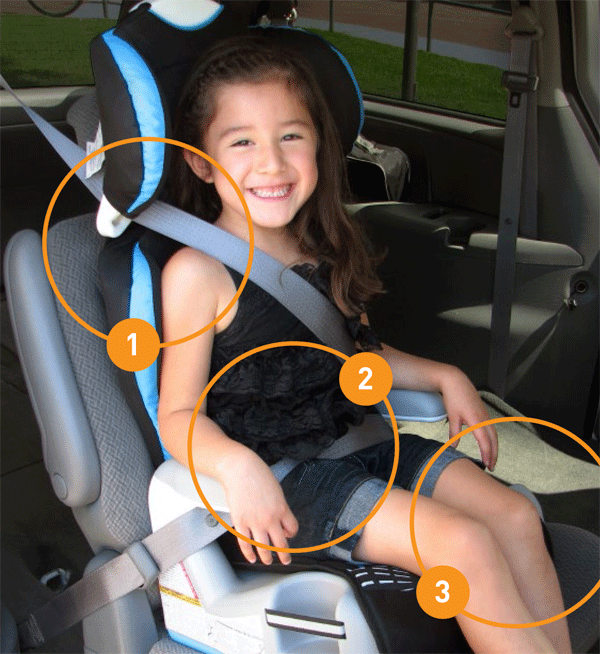Booster Seats
Seatbelts are designed for a larger sized body. A booster seat allows a child to safely use the adult seat belt by positioning it properly over their body. This protects children from serious brain or spinal injury, or damage to vital internal organs in the event of a crash.
Don’t rush your child into a booster seat!
It is safer to use a car seat with a 5 pt. harness as long as possible, until they outgrow the weight or height limits of that car seat. Newer models of car seats can be used with the harness up to 30 kg (65 lb.).
Booster seat or seat belt?
When do I switch?
If the seat belt does not fit properly according to any of the criteria below, your child should remain in a booster seat.
- The shoulder belt must lie across your child’s shoulder (not the face or neck) and middle of the chest
- The lap belt should lie across the upper thighs (not over the stomach)
- Your child’s knees should bend comfortably over the edge of the vehicle seat
Ontario Law
The current Ontario law requires that a child be secured in a booster seat until they are 8 years old, or weigh 80 lbs. (36 kg.) or are 4 ft. 9 in. (145 cm.) tall. Drivers who fail to use booster seats face a $240 fine and 2 demerit points.
Proper head and neck support
It's important that children have proper head and neck support when using a booster seat. If the booster seat raises the child so the top of their ears are above the vehicle seat, then a high back booster is needed. This will provide head and neck protection for the child.
Children are safer in a booster seat until they reach a height of 4’9”
The booster seat raises the child in the vehicle so that the seat belt is positioned properly on their body and allows the child to see out the window so they are a happier passenger. The lap belt should lie flat across the thighs and the shoulder belt across the center of the chest. The shoulder belt should never be placed under the child’s arm or behind their back since this could result in serious injuries to the child.
When is a child ready to move to the vehicle seat belt?
A child is ready to move to the vehicle seat belt when they have reached the upper weight limit of the booster seat or when the top of the child’s ears are above the back of the vehicle seat or high back booster. Transport Canada recommends all children 12 years and younger sit in the back seat of the vehicle, especially when there is a passenger side air bag.
Date of creation: September 1, 2012
Last modified on: March 16, 2023
References
1Infant & Toddler Safety Association (2015). Before you turn the key: Everything you wanted to know about transporting young children, but didn’t know you needed to ask. Kitchener, ON: The Infant & Toddler Safety Association.
